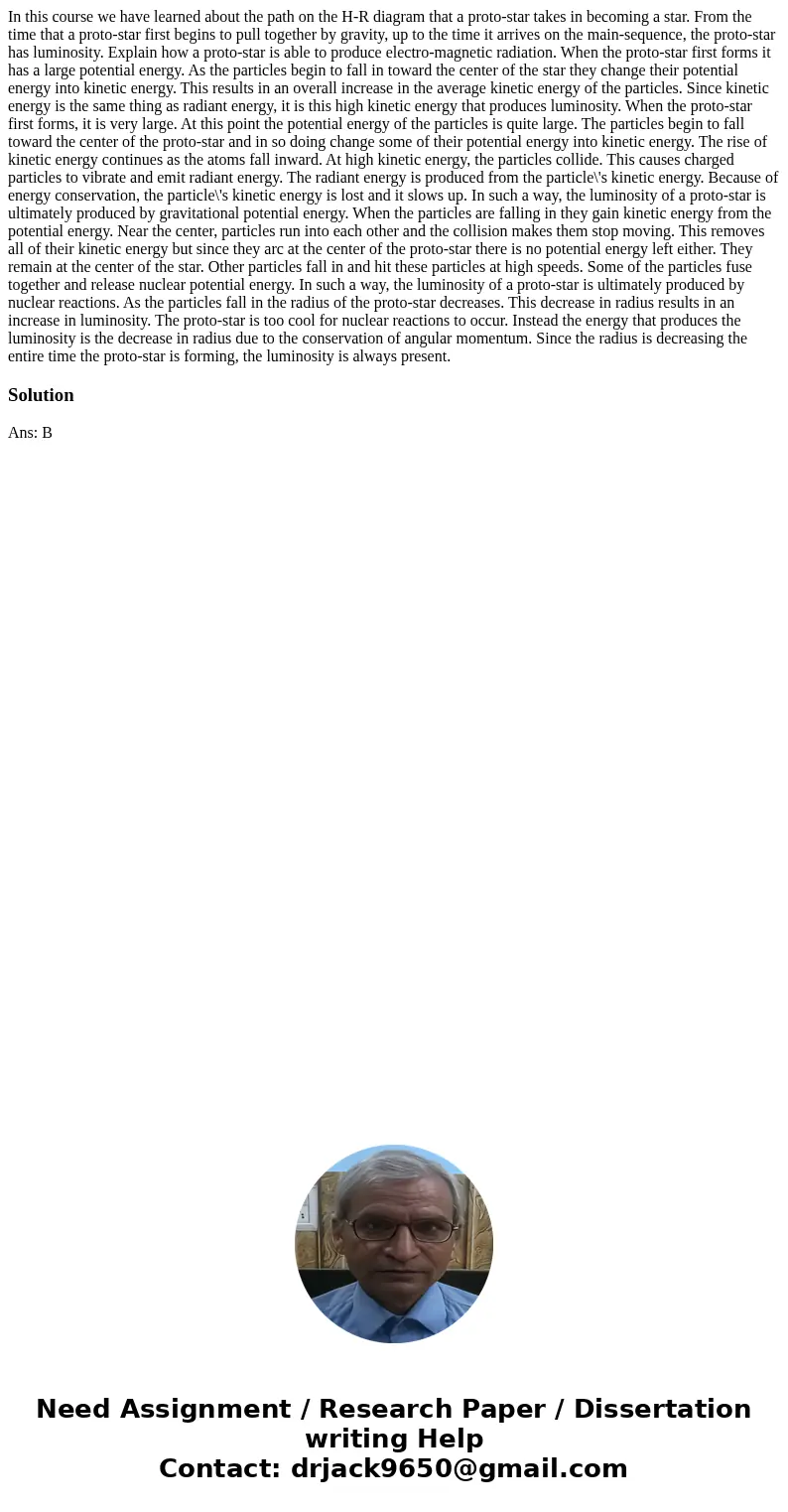In this course we have learned about the path on the HR diag
In this course we have learned about the path on the H-R diagram that a proto-star takes in becoming a star. From the time that a proto-star first begins to pull together by gravity, up to the time it arrives on the main-sequence, the proto-star has luminosity. Explain how a proto-star is able to produce electro-magnetic radiation. When the proto-star first forms it has a large potential energy. As the particles begin to fall in toward the center of the star they change their potential energy into kinetic energy. This results in an overall increase in the average kinetic energy of the particles. Since kinetic energy is the same thing as radiant energy, it is this high kinetic energy that produces luminosity. When the proto-star first forms, it is very large. At this point the potential energy of the particles is quite large. The particles begin to fall toward the center of the proto-star and in so doing change some of their potential energy into kinetic energy. The rise of kinetic energy continues as the atoms fall inward. At high kinetic energy, the particles collide. This causes charged particles to vibrate and emit radiant energy. The radiant energy is produced from the particle\'s kinetic energy. Because of energy conservation, the particle\'s kinetic energy is lost and it slows up. In such a way, the luminosity of a proto-star is ultimately produced by gravitational potential energy. When the particles are falling in they gain kinetic energy from the potential energy. Near the center, particles run into each other and the collision makes them stop moving. This removes all of their kinetic energy but since they arc at the center of the proto-star there is no potential energy left either. They remain at the center of the star. Other particles fall in and hit these particles at high speeds. Some of the particles fuse together and release nuclear potential energy. In such a way, the luminosity of a proto-star is ultimately produced by nuclear reactions. As the particles fall in the radius of the proto-star decreases. This decrease in radius results in an increase in luminosity. The proto-star is too cool for nuclear reactions to occur. Instead the energy that produces the luminosity is the decrease in radius due to the conservation of angular momentum. Since the radius is decreasing the entire time the proto-star is forming, the luminosity is always present.
Solution
Ans: B

 Homework Sourse
Homework Sourse